How to Clean an Espresso Machine: An A to Z Guide
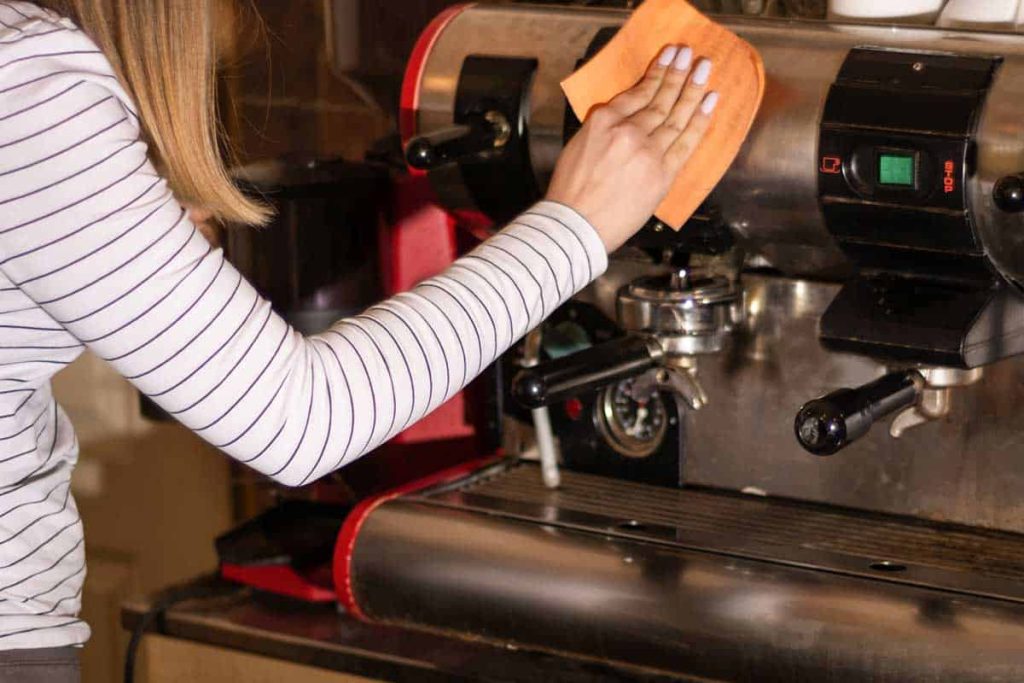
It may be boring and probably a bit tiring taking care of your espresso machine, but the truth is, that is the only way to have this coffee maker serve you great tasting shots without fail. Today, I’ll show you how to clean an espresso machine.
You could do everything right to get a perfect shot of espresso, from getting the perfect espresso beans and grind to mastering the art of brewing it, but that’s only half the effort. The other half is determined by how well you clean your machine. Every step matters, and there’s no room for error!
On your own, there’s a lot you could do wrong, and this only hurts your bottom line, which is a perfect shot of espresso. In this guide, I take you through every step of the cleaning process, showing you what to do and avoid. You will also learn how often you should do this, plus so much more.
Let’s get started!
What You Will Need
- Recommended cleaning powder for espresso machines
- A blind portafilter (cleaning blank)
- Cleaning brush for the group heads
- Cleaning container, preferably one with 1-liter capacity
- Milk frother cleaner
How to Clean an Espresso Machine: The Daily Routine
You will have to do most of the cleaning daily, but still, there are parts that should be cleaned weekly and annually.
Backflushing Your Espresso Machine
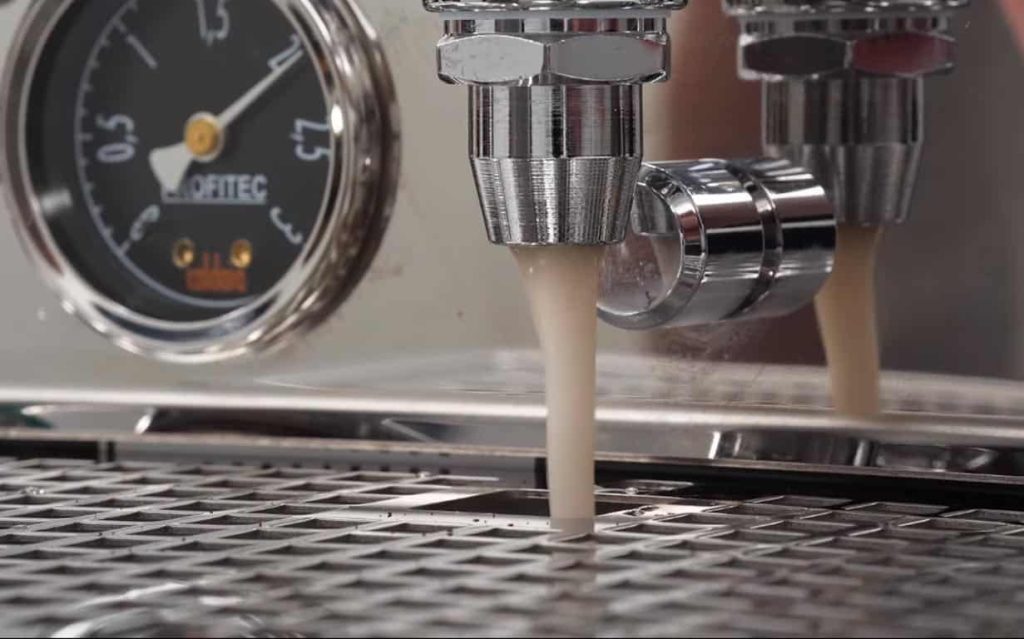
Make this an everyday act, especially if you use your espresso machine often or run a busy cafe. Here’s why.
As you brew, oils and other debris accumulate in the group head and passageways. Left unattended, they fill up and clog the machine. Eventually, it will stop working, and you can guess what that means: higher repair costs and loss of valuable time.
Backflushing steps in to help you avoid such experiences. This is how you do it.
Step 1
Take out the portafilter from the group head, detach the basket from it, and then insert the cleaning blank in its place. Meanwhile, put the basket in a container filled with boiling water and leave it to soak.
Step 2
Pour about 3 grams (1/2 teaspoon) of the espresso machine cleaning powder into the blind portafilter.
Step 3
Insert the portafilter back into the group head.
Step 4
Activate the brew cycle for 15 seconds, stop, wait for a minute, then repeat. Do this four to five times.
Step 5
Take out the portafilter from the group head.
Step 6
Activate the brew cycle again, then rinse the portafilter with the water from the group head.
Step 7
Repeat process 2 and 3 but without the espresso cleaning powder.
Step 8
Remove the cleaning blank and insert the basket again. You could brush the group heads just to be sure there’s no residue left.
Step 9
Flush the group head again to get rid of any lingering soap residue.
And voila! Your group heads are crisp, clean, and ready to brew a fresh delicious shot of espresso.
Cleaning Portafilters
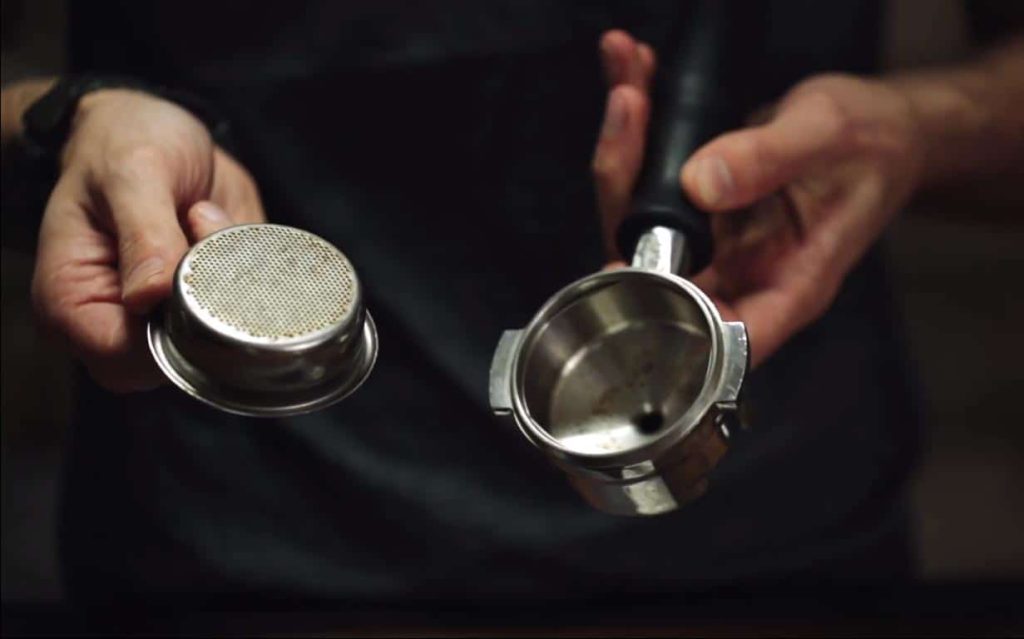
Right after backflushing your espresso machine, the next thing you will want to make clean is the portafilter(s). Lots of oil deposits obviously gather in them from day to day, and you don’t want to ignore that because this could turn into a disaster.
So here’s how to clean them:
Step 1
Take the portafilters off from the group head and put them (together with the basket) in a cleaning container.
Step 2
Add roughly 3 grams (1 tablespoon) of the espresso machine cleaning powder, and then fill up the container with hot water. (Make sure everything is submerged except the handles as they tend to corrode over time.)
Step 3
Leave them in that state for about 20 minutes, and then take them out.
Step 4
Thoroughly wash the portafilters and baskets using hot water and a brush.
Step 5
Place the baskets back into the portafilters, then insert them back into the group head.
3. Cleaning Steam Wands
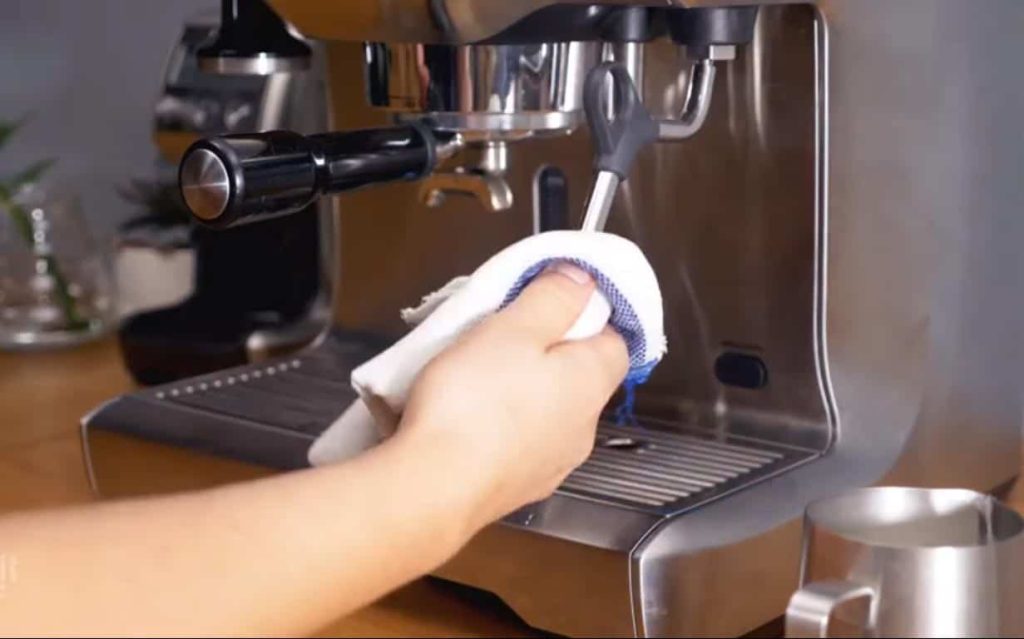
This is the other component you cannot afford to ignore. Right after a session of steaming, it would be best to wipe the wand to avoid milk sticking to the device. It’s a simple procedure, really!
Just simmer the wand with a wet cloth for a few minutes, and then wipe off the burnt milk. That’s it! You may be tempted to use another object, like a metallic item, to scrape the steam wand, but that would be a very bad idea. You may destroy the wand’s coating, and this will only make things worse.
Here’s another way to clean the steam wand:
Step 1
Fill up your container with cold water and pour about 30ml of the milk froth cleaner into it.
Step 2
Submerge the wand into the solution, then engage it for about 5 seconds.
Step 3
Repeat this six to seven times, and then wipe the wand thoroughly with a clean piece of cloth.
Step 4
Empty the container and fill it up with cold water.
Step 5
Repeat process 2 but without the milk froth cleaner (this helps to flush out any lingering cleaning solution).
Be careful not to soak the steam wand or submerge for long without engaging it as this could force the residue back into the steam system. This will force you to strip down the machine and clean every piece of it.
4. Cleaning Shower Screens
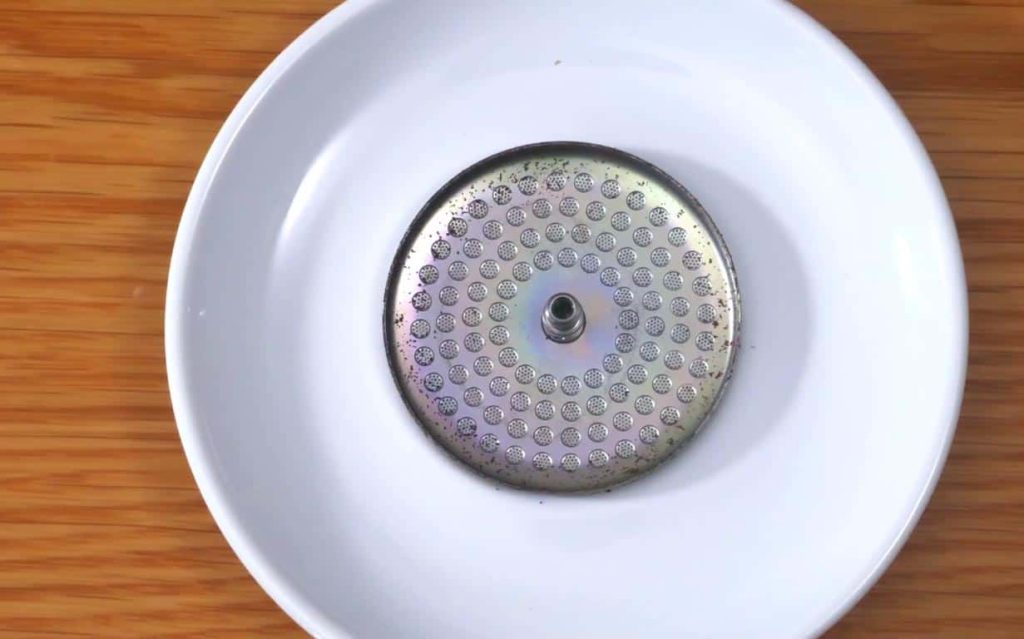
Shower screens get dirty very quickly due to the constant contact between them and the coffee puck. To clean them, you first have to unscrew them, but the procedure isn’t the same for every espresso machine.
Some use a central hex screw. Others use a central flat head. There are also models that use gasket tension to hold the screen. My advice is to check your machine’s manual to understand how to remove and reinstall your specific shower screen.
But when it comes to cleaning, the procedure is the same. Here are the steps:
Step 1
Put the shower screens, together with the screw and metal plate, in a container.
Step 2
Fill it up with hot water, then add the espresso machine cleaning powder.
Step 3
Leave them to simmer for about 15 minutes.
Step 4
Take the parts out of the water, then use a soft brush to scrub off the residue.
Step 5
Once clean, screw the shower screens back into their positions.
Cleaning your shower screens will always be easy if you make this routine. But if you leave the debris to build up, this will only toughen up the process. After one to two years, go ahead and replace the screens because they suffer wear and tear with time.
Espresso Machine Weekly Cleaning
Daily cleaning seems to cater to so many parts, but still, it’s not enough. Other components you have to clean at the end of every week include:
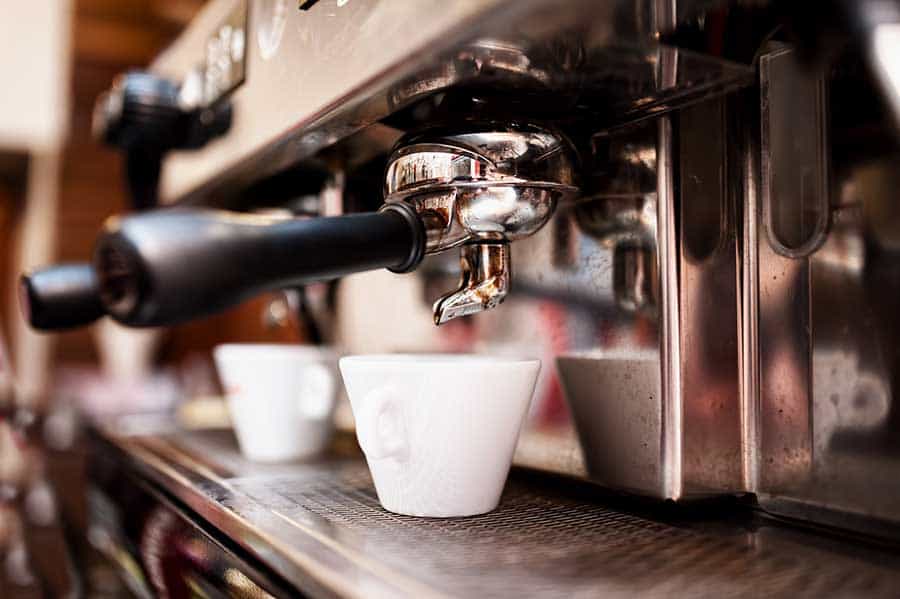
Portafilter Spout
Even though it sounds thorough, portafilter cleaning still doesn’t take care of all the device’s components. The good news? You don’t need a new procedure for cleaning the spout. Remove and clean them as you would the shower screens.
Steam Tank
Your steam tank may suffer calcification if the water you use for brewing is filled with minerals. Speak to your manufacturer for guidance on how and where to carry out decalcification. Doing this regularly will help your espresso machine to perform optimally.
Grinder Opening
Don’t forget the grinder opening as well. Plenty of coffee most definitely gets stuck in there as well, and if you neglect it for long, your grinder could stop working at some point. Get a soft brush and wooden stick and use them to pluck the debris off it.
Espresso Machine Annual Cleaning
At the end of the year, some parts will have worn out and will require replacements. Common ones that you should never miss to replace, especially if you run a busy cafe, include:
- Portafilter baskets
- Waste pipe
- Steam valve and springs
- Expansion valve
- Brew actuator bearing
So that covers cleaning espresso machines daily, weekly, and annually! It sounds like a lot of work, but once you get down to it, this will gradually grow into a habit that you won’t have to think about much.
FAQs on Cleaning Espresso Machines
Which cleaning products should I use to clean my espresso machine?
Your device’s manufacturer will always recommend products you should use to clean their machines. A perfect example is the espresso machine cleaning powder. You could use water and vinegar, but always make sure you have rinsed the machine thoroughly to avoid instances of lingering vinegar notes in your espresso shots.
What happens if an espresso machine is not kept clean regularly?
When your espresso machine is left unclean for more than a day, the accumulating residue will start to affect the device’s performance and also the taste of your coffee. Your shots will start to have a bitter taste and an acrid smell. Also, the debris will clog up your machine and cause blockages that might cause the device to become dysfunctional.
Final Thoughts
Take proper care of your espresso machine, and it will reward you with exceptional shots and consistently great service. That’s the rule to keep in mind even for the other coffee makers. They won’t magically look after themselves; it’s on you to do so.
For espresso machines, it’s pretty easy. No special skills or tools are required. Plus, each of the items you need to do that are easily available. Gather them, then thoroughly follow each of the steps mentioned on how to wash an espresso machine.
Once you turn this into a routine, the process will become a breeze. You will even enjoy them, knowing that your machine is completely free from danger and ready to serve you without fail.
Owen is a writer and editor at Caffe Streets who considers himself a coffee fanatic. He spends his time researching and testing different coffee beans and brewing methods and sharing what he learns with others.





